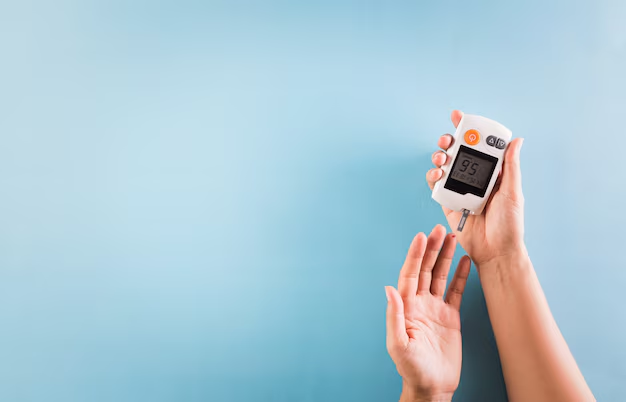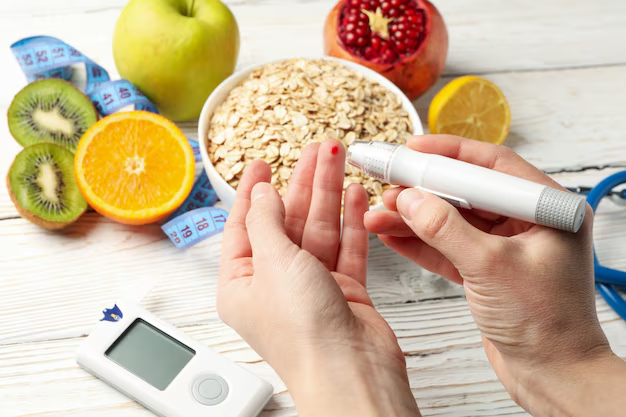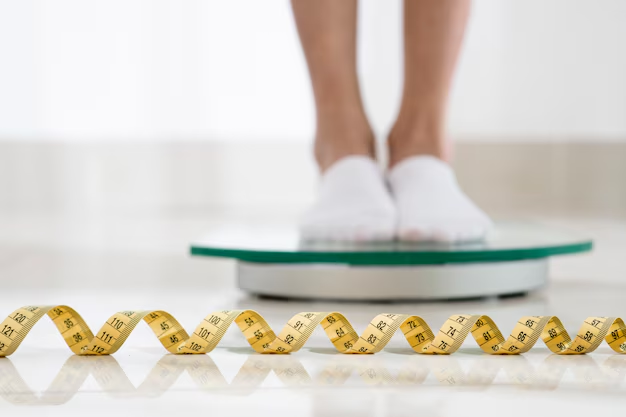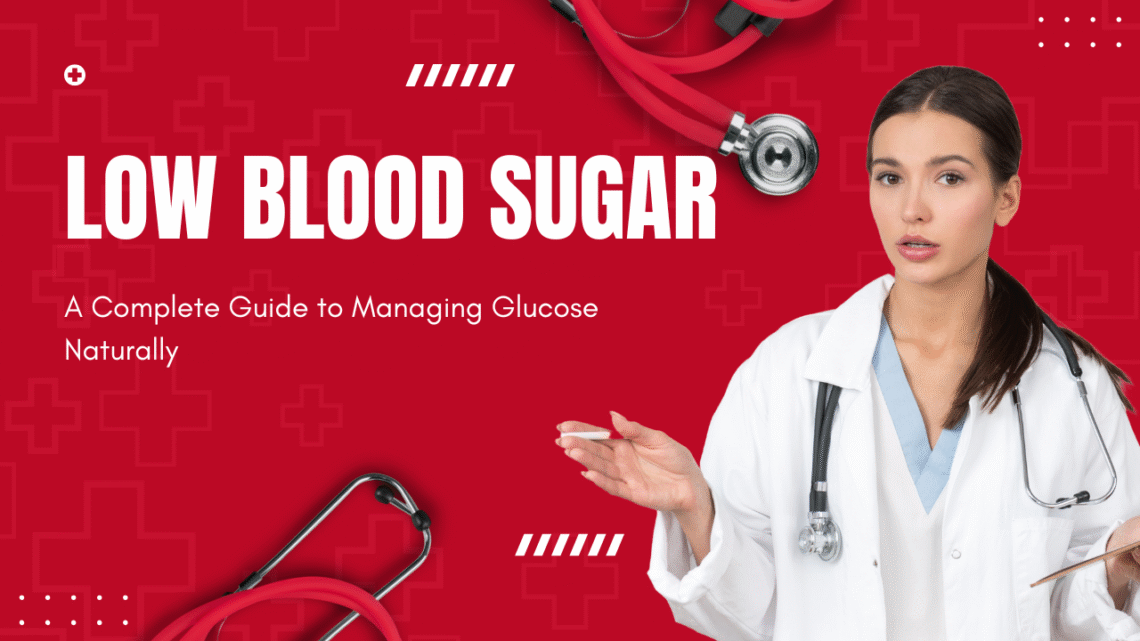Introduction
High blood sugar—also called hyperglycemia—is becoming increasingly common due to sedentary habits, poor diet, and chronic stress. These lifestyle factors can disrupt the body’s ability to regulate glucose, leading to dangerously high levels over time. If not addressed, this condition can result in serious health issues like type 2 diabetes, heart disease, vision loss, and kidney damage.
The encouraging news is that you can achieve low blood sugar naturally by making simple but consistent lifestyle changes. A balanced diet, regular physical activity, stress management, and quality sleep all play key roles in maintaining stable glucose levels. These strategies not only help manage existing conditions but also prevent future complications related to high blood sugar.
This guide is designed to provide effective tools and tips to help you reach and maintain low blood sugar safely. Whether you’re dealing with prediabetes or simply want to keep your blood sugar in check, the following advice can support a healthier, more energetic life.
Let’s dive deep into the science, strategies, and top 8 tips for lowering blood sugar and living a healthier life.
Understanding Blood Sugar: What Is It?

High blood sugar, or hyperglycemia, is increasingly common today due to poor eating habits, lack of exercise, and ongoing stress. These lifestyle factors interfere with your body’s natural ability to regulate blood sugar levels. Over time, this can lead to serious complications such as type 2 diabetes, heart disease, kidney damage, and vision problems. That’s why it’s essential to take action before long-term damage sets in.
The good news is that achieving low blood sugar naturally is possible with consistent lifestyle changes. A diet rich in whole foods, regular physical activity, proper hydration, and good sleep hygiene can significantly stabilize your glucose levels. Stress management techniques like yoga, deep breathing, and mindful relaxation also support blood sugar balance by reducing cortisol levels.
This low blood sugar guide offers practical and effective strategies to manage your glucose safely and sustainably. Whether you’re working to reverse prediabetes or simply aiming for better health, these steps can help you avoid complications and feel more energized. Taking charge of your blood sugar now is a smart move for long-term wellness and vitality.
Normal Blood Sugar Levels
| Condition | Fasting Glucose | Post-Meal (2 hours) |
|---|---|---|
| Normal | 70–99 mg/dL | <140 mg/dL |
| Prediabetes | 100–125 mg/dL | 140–199 mg/dL |
| Diabetes | ≥126 mg/dL | ≥200 mg/dL |
What Causes High Blood Sugar?
Understanding the root causes of low blood sugar is essential for preventing and managing it effectively. Also known as hypoglycemia, low blood sugar occurs when glucose levels in the blood fall below the normal range, typically under 70 mg/dL. This can happen due to various factors and may lead to symptoms like shakiness, dizziness, confusion, and fatigue if not addressed promptly.
Common causes of low blood sugar include skipping meals, taking too much insulin or diabetes medication, intense physical activity without proper nutrition, and consuming alcohol on an empty stomach. People with diabetes are particularly at risk, but even non-diabetics can experience drops in blood sugar due to irregular eating patterns, certain medications, or underlying health conditions.
To avoid episodes of low blood sugar, it’s important to maintain regular meal times, include balanced snacks if needed, and monitor how your body responds to exercise and medication. Recognizing the early warning signs and understanding the triggers can help you take quick action—like eating a fast-acting carb—to stabilize your levels. Educating yourself about the causes and prevention of low blood sugar is a key step toward improving your energy, focus, and overall health.
- Poor Diet (high in refined carbs and sugar)
- Lack of Physical Activity
- Chronic Stress
- Obesity
- Insulin Resistance
- Sleep Deprivation
- Certain Medications
Symptoms of High Blood Sugar

Early detection is crucial. Watch out for these signs:
- Frequent urination
- Increased thirst
- Fatigue
- Blurred vision
- Headaches
- Slow-healing wounds
- Unexplained weight loss
Top 8 Tips to Lower Blood Sugar Naturally
1. Focus on Low-Glycemic Foods
Foods with a low glycemic index (GI) are essential for managing low blood sugar and keeping glucose levels stable throughout the day. These foods release sugar gradually into the bloodstream, preventing rapid spikes or drops. Choosing low GI foods is especially helpful for people who experience symptoms of low blood sugar such as dizziness, fatigue, or irritability.
Low GI options include whole grains, legumes, leafy green vegetables, and most fruits like apples and berries. These foods are rich in fiber, which slows down digestion and sugar absorption. By keeping blood sugar more consistent, they help reduce the risk of energy crashes and mood swings commonly linked to low blood sugar. Combining them with lean protein or healthy fats further enhances their stabilizing effects.
To better manage low blood sugar, aim to include a source of low GI carbohydrates in every meal and snack. Avoid highly processed foods and sugary drinks that can cause a quick spike followed by a sharp drop in blood glucose. Maintaining a balanced diet with the right combination of nutrients supports more consistent energy, sharper focus, and better overall health. Making smart food choices is a natural and effective way to prevent and manage episodes of low blood sugar.
Eat more:
- Leafy greens (spinach, kale)
- Whole grains (quinoa, brown rice)
- Nuts and seeds
- Lentils and beans
- Non-starchy vegetables (broccoli, cauliflower)
Avoid or limit:
- White bread
- Sugary cereals
- Soft drinks
- Candy
- Pastries
👉 Tip: Combine carbs with healthy fats or protein to slow glucose absorption.
2. Exercise Regularly

Physical activity plays a vital role in managing low blood sugar levels effectively and naturally. When you engage in exercise, your muscles require more energy and begin using glucose from your bloodstream. This not only fuels your body but also helps reduce excess sugar circulating in your blood, leading to more balanced glucose levels. Over time, regular exercise improves insulin sensitivity, meaning your body can regulate blood sugar more efficiently.
For individuals experiencing low blood sugar, moderate and consistent physical activity is essential. Activities like walking, swimming, cycling, or yoga can be especially beneficial. These exercises don’t spike stress hormones and help maintain steady glucose levels. It’s important, however, to monitor your body’s response during workouts, especially if you’re diabetic or prone to hypoglycemia, and carry a quick snack like fruit or glucose tablets if needed.
Incorporating exercise into your routine helps create a long-term foundation for healthy glucose control. Besides improving energy use, physical activity also supports weight management, reduces stress, and enhances overall well-being. For those aiming to maintain or prevent low blood sugar, staying active is a powerful and natural tool that works hand-in-hand with proper nutrition and lifestyle choices.
Effective types of exercise:
- Walking (30–45 minutes/day)
- Strength training (2–3x/week)
- Yoga for stress reduction
- HIIT (High-Intensity Interval Training)
👉 Tip: Just 15 minutes of walking after a meal can help lower blood sugar spikes.
3. Stay Hydrated
Staying hydrated plays a vital role in managing low blood sugar effectively. When you drink enough water, it supports kidney function, allowing the body to flush out excess glucose through urine. This natural process helps keep blood sugar levels balanced and prevents sudden spikes or crashes, which are common in individuals with unstable glucose levels.
People dealing with low blood sugar or frequent blood sugar fluctuations should make hydration a daily habit. Dehydration can interfere with how your body processes glucose and may worsen symptoms like fatigue, dizziness, and confusion. Drinking at least 8–10 glasses of water a day can help stabilize your energy levels and keep your metabolic system functioning smoothly.
In addition to water, low-calorie beverages like herbal teas or infused water with lemon or cucumber can offer hydration without adding sugar. Avoid sugary drinks, as they can cause sharp rises followed by drops in glucose. Making water your go-to drink is a simple yet powerful strategy to prevent low blood sugar episodes and maintain overall health. Staying well-hydrated also supports digestion, detoxification, and circulation—three essential elements in controlling blood sugar naturally and effectively throughout the day.
Aim for:
8–10 glasses (2–2.5 liters) of water daily.
👉 Tip: Avoid sugary drinks—opt for water, herbal teas, or infused water with lemon or cucumber.
4. Manage Stress Effectively

Chronic stress can significantly impact your health, especially when it comes to maintaining low blood sugar levels. When you’re under constant stress, your body releases a hormone called cortisol. Cortisol prepares your body to deal with challenges, but one of its effects is raising blood sugar to provide quick energy. Over time, consistently high cortisol levels can make it harder to keep blood sugar low, even if you’re eating well and exercising regularly.
For individuals trying to manage or maintain low blood sugar, stress management becomes just as important as diet and exercise. Prolonged stress can interfere with insulin function and trigger sugar cravings, leading to glucose spikes. These sudden changes in blood sugar levels can cause fatigue, mood swings, and increased risk of insulin resistance. That’s why incorporating daily stress-reducing practices is vital for overall blood sugar control.
To support low blood sugar naturally, include relaxation activities like meditation, deep breathing, yoga, or even a short walk in nature. Creative hobbies, journaling, or listening to soothing music can also help calm the mind. These small, consistent habits help lower cortisol levels, balance hormones, and contribute to better glucose management—making it easier to stay healthy and energized every day.
Proven stress-reduction techniques:
- Meditation
- Deep breathing
- Journaling
- Spending time in nature
- Listening to calming music
👉 Tip: Just 10 minutes of deep breathing a day can regulate your stress hormones.
5. Prioritize Sleep
Poor sleep disrupts insulin sensitivity and increases cravings for sugary foods.
Goal:
7–9 hours of quality sleep each night.
👉 Tip: Stick to a sleep schedule, avoid screens before bed, and create a calming bedtime routine.
6. Add Fiber to Your Diet
Soluble fiber plays a vital role in managing low blood sugar by helping regulate how the body absorbs sugar. Unlike simple carbohydrates that quickly spike blood glucose and drop it just as fast, soluble fiber slows down digestion and sugar absorption in the intestines. This creates a more gradual release of glucose into the bloodstream, which can help prevent sudden drops that lead to low blood sugar episodes.
Including more soluble fiber in your diet can stabilize energy levels and reduce the risk of blood sugar crashes. Foods rich in soluble fiber include oats, beans, lentils, apples, chia seeds, and flaxseeds. These fiber-rich foods also help you feel fuller for longer, which supports better appetite control and steady glucose levels throughout the day. For individuals prone to low blood sugar, this can be an important dietary strategy.
A well-balanced diet that includes enough soluble fiber not only helps avoid low blood sugar but also supports heart health and digestive function. To get the best benefits, aim to include fiber with every meal, especially in combination with protein and healthy fats. These combinations work together to maintain steady blood sugar and prevent unwanted dips that cause fatigue, dizziness, and other symptoms of hypoglycemia.
Best sources of fiber:
- Oats
- Berries
- Chia seeds
- Flaxseeds
- Apples
- Legumes
👉 Tip: Start your morning with oatmeal and berries for a blood sugar-friendly breakfast.
7. Monitor Your Blood Sugar Levels
Regular monitoring is essential for managing low blood sugar effectively. It helps you understand how your body responds to different foods, levels of physical activity, and emotional stress. When you check your blood sugar regularly, you can detect early signs of a drop in glucose and take quick action to prevent symptoms like dizziness, fatigue, or confusion.
Understanding your patterns also helps you make smarter daily choices. For example, you may notice certain meals or intense workouts cause low blood sugar episodes. By identifying these trends, you can adjust your diet or activity levels to maintain stable glucose levels throughout the day. Monitoring also helps you assess whether your treatment plan—like medications or insulin—is working as expected.
For anyone dealing with low blood sugar, tracking levels consistently provides peace of mind. It allows you to respond to changes before they become serious, promoting better health and energy. Whether you’re managing hypoglycemia or just aiming to stay within a healthy range, regular checks empower you to take control of your well-being and avoid complications. Always keep a glucose monitor handy and log your readings to stay on top of your health.
Ways to monitor:
- Glucometer (finger prick)
- Continuous Glucose Monitor (CGM)
👉 Tip: Keep a log to track trends and patterns, which helps in meal planning and adjustments.
8. Lose Excess Weight Gradually

Even a small reduction in weight can improve insulin sensitivity and lower glucose levels.
Healthy weight loss tips:
- Eat in a calorie deficit
- Avoid crash diets
- Increase daily movement
- Build lean muscle
👉 Tip: Losing just 5–10% of body weight can significantly reduce blood sugar levels in prediabetics.
Foods That Help Lower Blood Sugar
Certain foods contain compounds that may naturally regulate blood glucose:
| Food | Benefit |
|---|---|
| Cinnamon | Improves insulin sensitivity |
| Apple cider vinegar | Reduces post-meal spikes |
| Garlic | May improve fasting glucose |
| Berries | Rich in antioxidants and fiber |
| Fatty fish | Reduces inflammation |
| Avocados | Stabilize glucose with healthy fats |
Foods to Avoid for Blood Sugar Control
| Food Type | Examples |
|---|---|
| Refined carbs | White bread, pastries |
| Sugary snacks | Candy, soda, ice cream |
| Processed foods | Packaged chips, instant noodles |
| Sweetened beverages | Fruit juices, energy drinks |
| Fried food | French fries, fried chicken |
Supplements for Blood Sugar Control (Consult a doctor before using)
- Berberine – Comparable to metformin in lowering glucose
- Alpha-Lipoic Acid – Improves insulin sensitivity
- Chromium – Helps with glucose metabolism
- Magnesium – Many diabetics are deficient
- Fenugreek – Contains fiber that helps slow sugar absorption
Lifestyle Habits That Support Blood Sugar Control
- Eat on a schedule – Prevents glucose dips and spikes.
- Don’t skip meals – Can cause rebound hyperglycemia.
- Smaller, balanced meals – Reduce post-meal sugar rises.
- Practice mindful eating – Avoid overeating and emotional eating.
- Limit alcohol – Alcohol can disrupt glucose regulation.
Blood Sugar and Mental Health
Mood swings, anxiety, and fatigue are often linked to blood sugar imbalances. Maintaining stable blood glucose improves:
- Focus
- Memory
- Energy levels
- Emotional resilience
Balanced blood sugar = balanced mind.
Who Should Monitor Their Blood Sugar?
- People with diabetes or prediabetes
- Individuals with family history of diabetes
- Anyone experiencing high sugar symptoms
- Those with overweight or obesity
- Pregnant women (to monitor for gestational diabetes)
When to Seek Medical Help
If you notice persistent symptoms of high blood sugar or are unable to control your levels with lifestyle changes alone, consult a:
- Primary care physician
- Endocrinologist
- Dietitian or nutritionist
- Diabetes educator
Medication may be required in some cases.
FAQs About Lowering Blood Sugar
1. Can I lower blood sugar without medication?
Yes. Many people successfully lower blood sugar through diet, exercise, stress reduction, and sleep improvement.
2. How long does it take to lower blood sugar?
Some people see changes in a few days to weeks. Long-term habits deliver lasting results.
3. Is fruit bad for blood sugar?
Whole fruits in moderation are fine. Avoid fruit juices and dried fruits with added sugars.
4. How often should I check my blood sugar?
It depends. Diabetics may need to check multiple times a day; others can monitor weekly.
5. Can exercise lower blood sugar immediately?
Yes! Light exercise after meals can significantly reduce post-meal glucose spikes.
Conclusion
Managing and lowering your blood sugar is completely within your reach—without extreme diets or harsh medications. By focusing on balanced nutrition, daily activity, stress relief, sleep, and hydration, you can restore your body’s natural blood sugar balance.
Remember: small steps lead to big changes. The most powerful strategy is consistency. Whether you’re trying to prevent diabetes or improve your overall health, applying these top 8 tips will empower you to take control of your wellness and live a vibrant, energized life.
FAQ
1. What is considered low blood sugar?
Low blood sugar, or hypoglycemia, is typically defined as a blood glucose level below 70 mg/dL. Severe symptoms may occur if levels drop below 54 mg/dL.
2. What are the common symptoms of low blood sugar?
Common symptoms include shakiness, sweating, dizziness, irritability, fast heartbeat, confusion, blurred vision, and in severe cases, fainting or seizures.
3. What causes low blood sugar?
Low blood sugar can be caused by skipping meals, taking too much insulin or diabetes medication, excessive alcohol intake, intense exercise, or delayed eating after insulin use.
4. How can I treat low blood sugar quickly?
Consume fast-acting carbohydrates like glucose tablets, fruit juice, honey, or regular soda. Follow the 15-15 rule: eat 15 grams of carbs, wait 15 minutes, and recheck your blood sugar.
5. How can I prevent low blood sugar?
Eat balanced meals regularly, don’t skip meals, monitor your blood sugar often, and adjust medications or exercise routines with the help of your healthcare provider.





